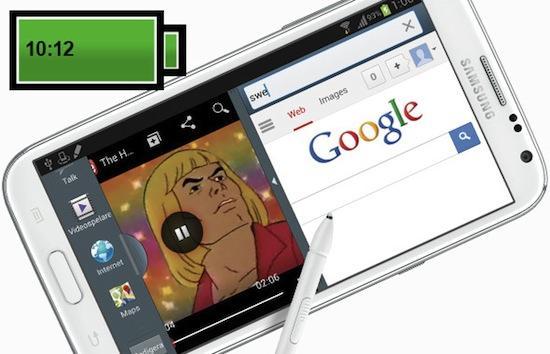
Once upon a time, consumers faced a dire choice. On the one hand, we'd use our phones for a full day with no Internet access and no need to charge them for days on end. If Internet connectivity was a must, we'd lug around briefcases for laptops to connect remotely. Fast forward ten years and we've consolidated our approach to one unit: the smartphone. The phone has taken on such a paramount role in daily life that we're at the mercy of our short memory.
In short, wake up and smell the lithium; decent battery life hasn't died of natural causes, consumer expectations murdered it.
At the turn of Google's Android, we saw handsets like the HTC EVO 4G which pushed screen size to the limit at the expense of battery life. Just a few short years later and the 4.3 inch panel pales in comparison to the 5 inch 1080p monstrosities of 2013.
The year thus far has brought many pro's and con's of new smartphones, with each OEM seeking our dollar because of their handset's features. For the most part, manufacturers have done a great job answering consumers. Among the Galaxy S 4's 5 inch Full HD Super AMOLED 1080p display and HTC One's BlinkFeed, manufacturers have even managed to bump up battery capacities to boot. In exchange, they've standardized software and hardware features along the way.
But between streaming the Miami Heat's Harlem Shake video and creating Vines, it seems we've lost sight of what we're getting in exchange for a solid day of battery life.
It's easy to write off 3G, LTE, and standby times of a smartphone because they're generally far from the truth. In day to day use, a smartphone's ability to connect to a network and the temperature of the external environment negatively affect battery life. The tests OEM's conduct are no doubt strenuous, but they're not indicative of daily usage. In other words, I have faith in the testing environments these tests are conducted in, but there's no better way to measure it than to see how it fares under your usage.
But connectivity isn't the only true battery drainer. Quad-core GPU's, and Full HD 1080p screen resolution aren't helping the cause either.
Sometimes smartphone batteries last long enough for their user to forgo criticism of a device. For others, not so much.
In the oh-so-common instance when you don't have the option to charge your phone up, why is it immediately the manufacturer's fault? To those who have said any of the following: "Non-removable batteries are the worst," or "I shouldn't have to charge my phone every night," I say to you: get real. The real issue negatively impacting battery life is consumer expectations.
A few weeks ago, I tampered with the clock speed and voltage of my smartphone. The end result was immeasurable in difference from stock clock speed and voltage settings. But that's not to say it wasn't worth it. I've kept the custom settings because it has helped me get through my work day with around 20% remaining after being off the charger for 9 hours. The problem is I am no longer in a position to criticize my smartphone for a few reasons.
The first reason is how often I use it. I abuse it. At any given moment, I am syncing two Gmail accounts, two Twitter handles, Facebook, Google+, Dropbox, Drive documents, texting around 200 messages a day, and surfing the Interwebs. In short, I'm a power user. Thankfully, my daily dose of connectivity is fueled by my position here at PhoneDog. Otherwise, I'd consider myself addicted to technology. (Clearly, I'm not addicted.) For those who think my usage is normal, I don't think you compute the argument. I don't expect all day battery life because I use my smartphone.
The point is, at all hours of the day, I'm limited by the 2,100mAH extended battery in my smartphone, and no matter how you slice it, it's probably never going to be enough. But the tradeoff is so much win. I'd take remote access to my entire digital footprint over having to connect to a mobile network on a laptop any day of the week. And when strictly comparing to laptops, my 9 hours of battery life is far from terrible. I fail to understand how battery life can be so harshly judged when there's so much you get in return.
If I had a smartphone like the HTC One with a non-removable 2,300mAH battery, I'd consider getting a Mophie Juice Pack, or mobile battery pack before I complained about battery life. The tradeoff for 12 hours of battery life with 20-30% life remaining as per our Aaron Baker's testing is worth all of the One's features and gripes of a non-removable battery.
But I'm most interested to hear your take on the matter, reader. Am I completely off the mark by saying consumer expectations of battery life predispose us to disappointment? Or are our devices truly underpowered and require better battery life? What would you trade for two, three, or four days of battery life?
Image via Laptopmag.